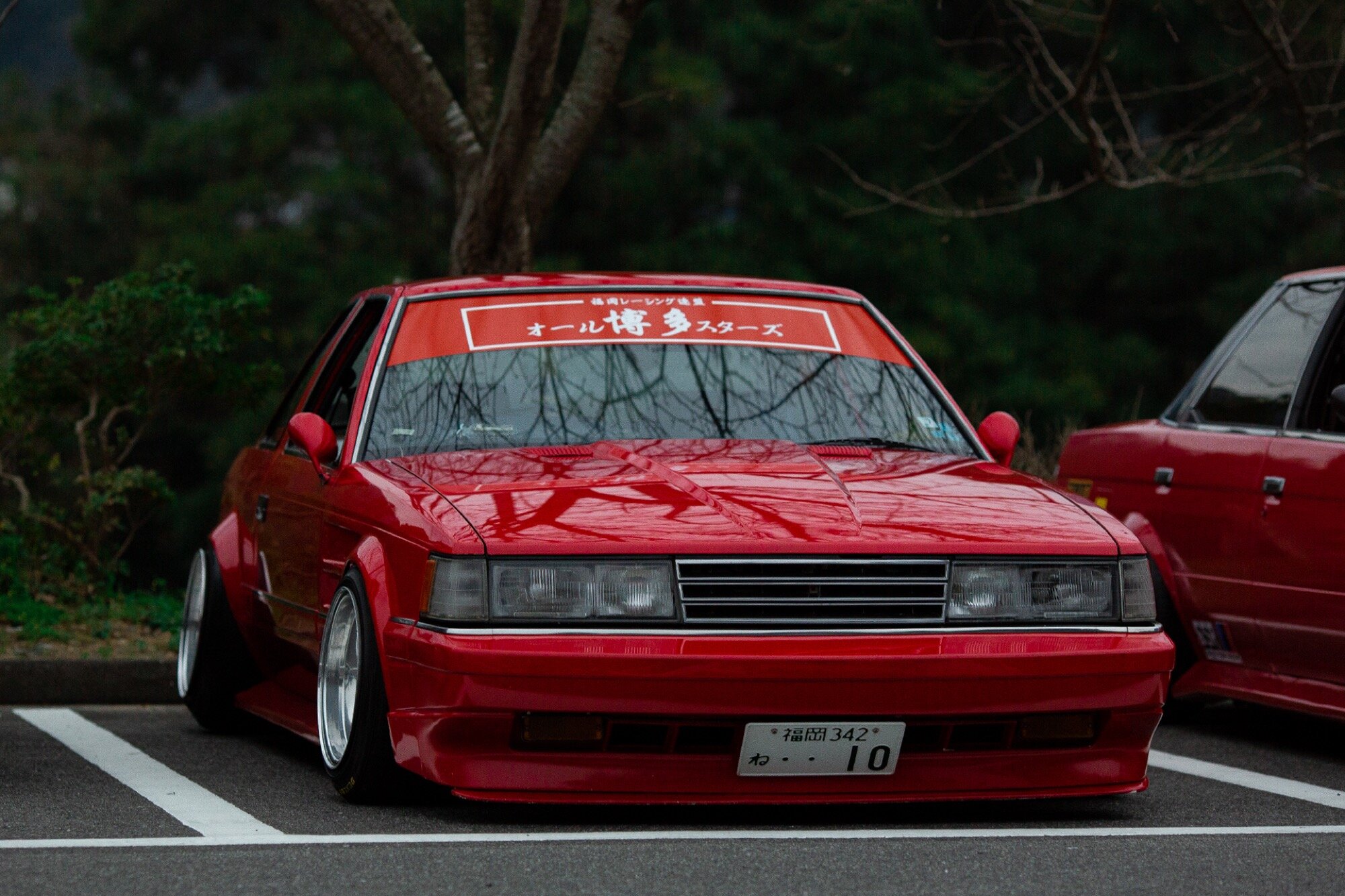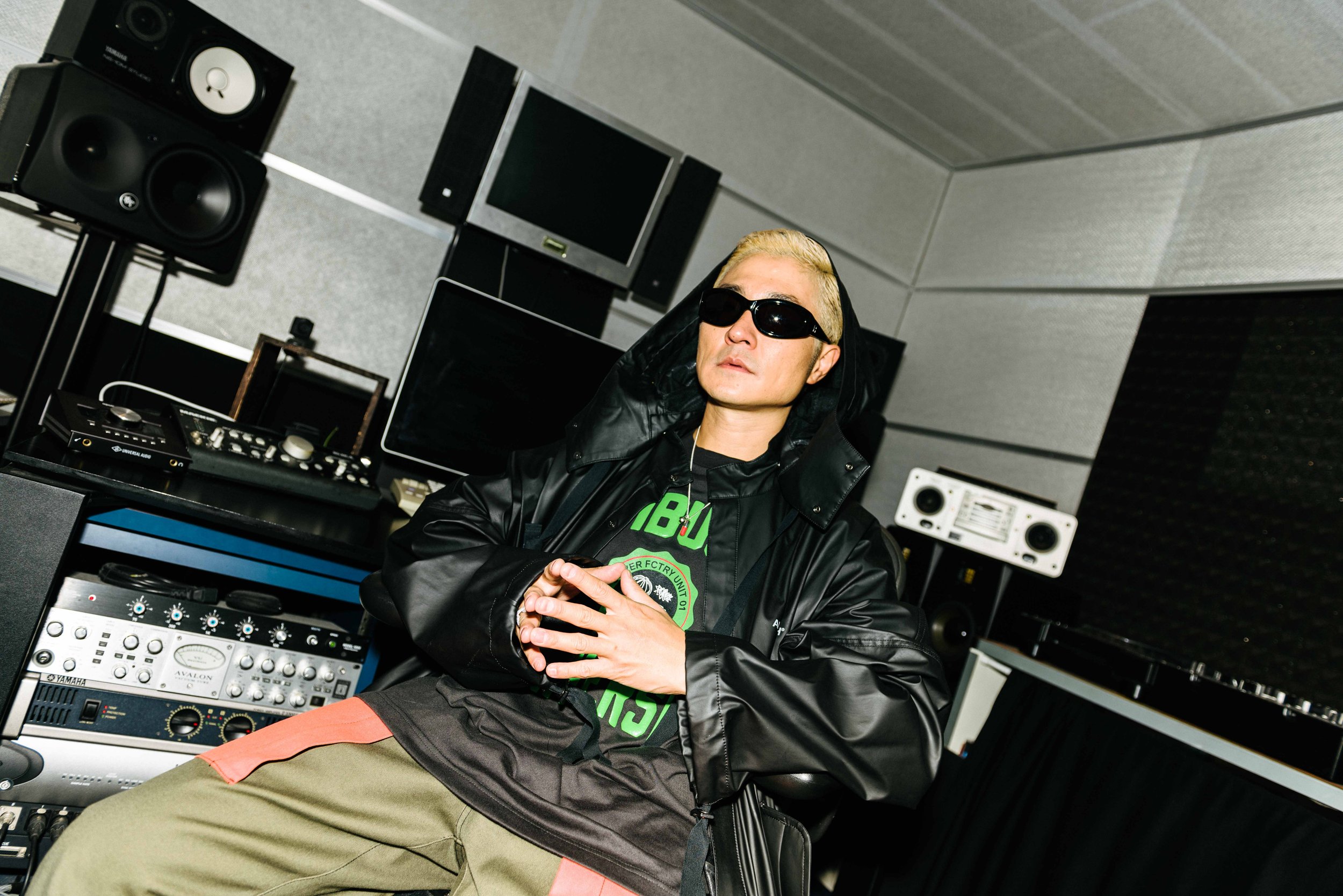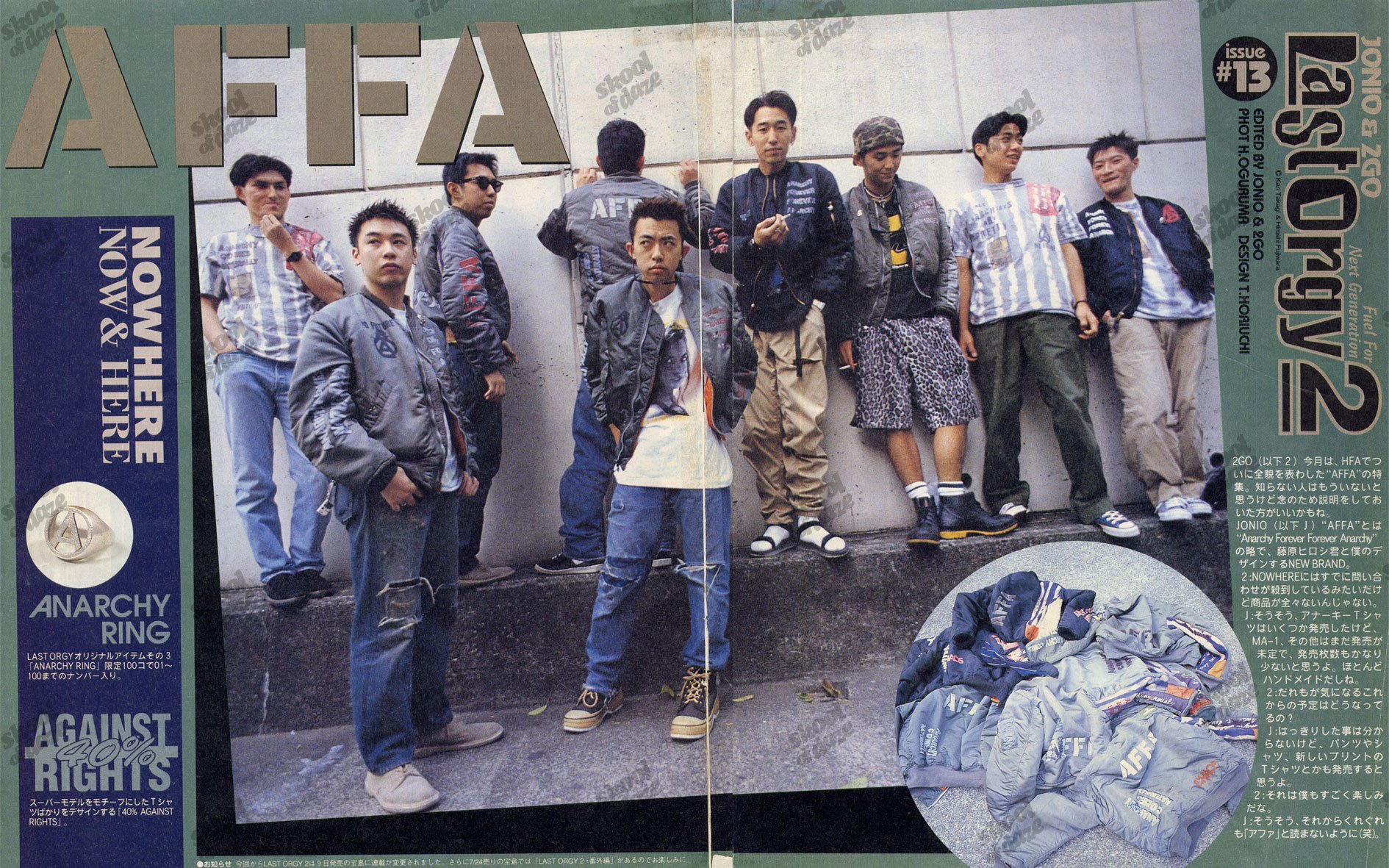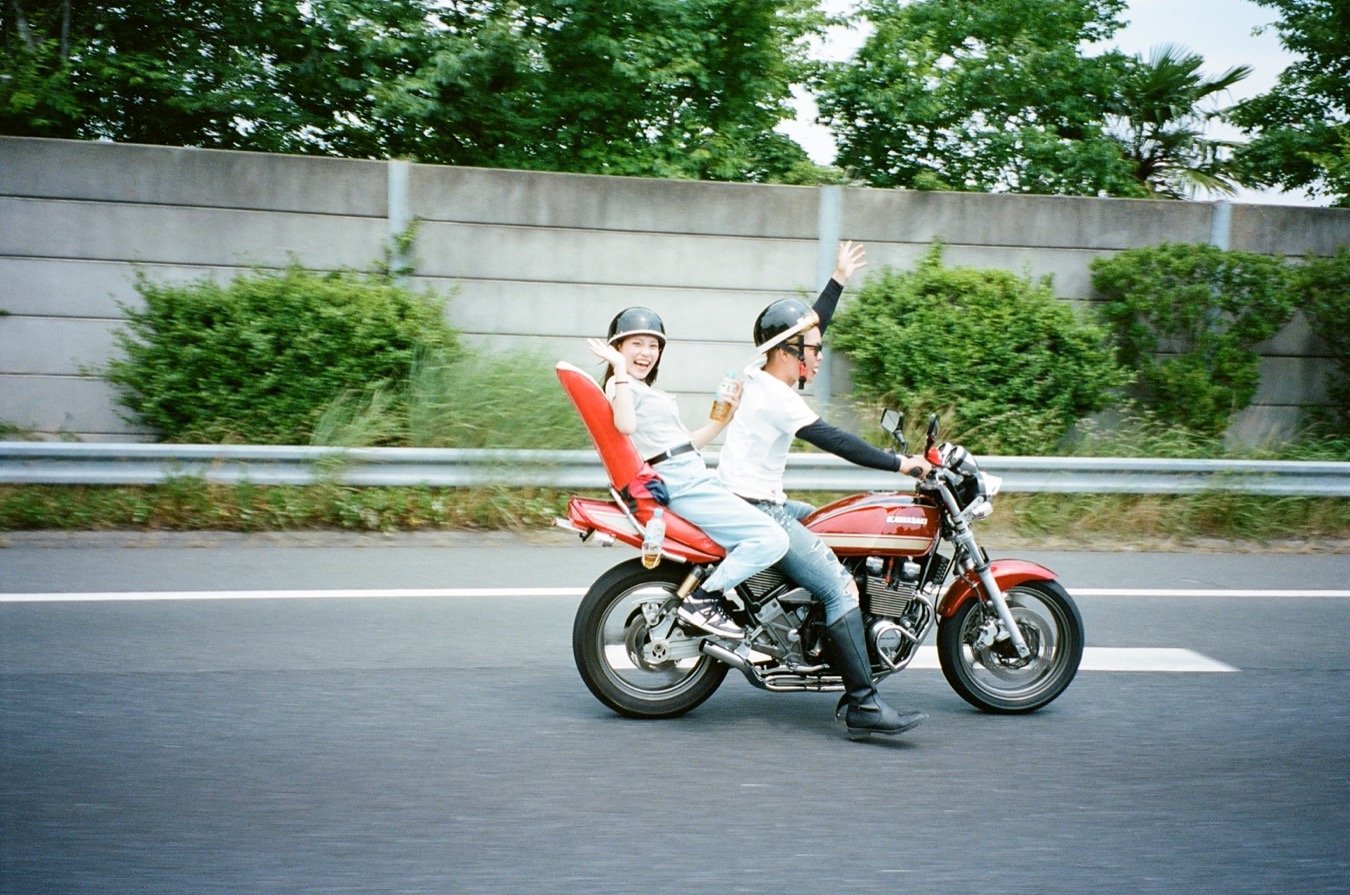Bōsōzoku's Flamboyant Style: Breaking down the outfit
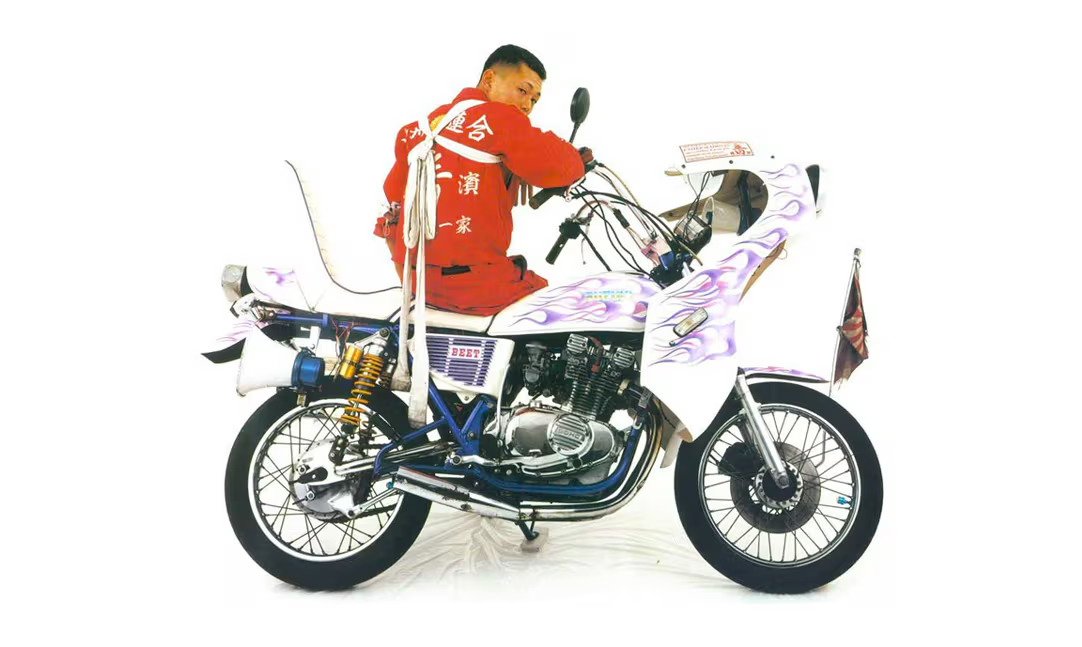
When you picture Japan and bikes, the first things that come to your mind might be the iconic sport bikes & races. From the Kawasaki Ninja to the SUZUKI Katana, through to the famous futuristic anime bikes straight from the likes of Akira. Even outside of Japan, most of the sport bikes that zoom past you in the streets are by Japanese makers. But let’s take a look at another side, the rather ruthless side of bike culture in Japan: Bōsōzoku. To fully understand Bōsōzoku, you need to turn back the clock to 50+ years ago.
Back in the 1960s, the streets were rather peaceful in Japan. That is, until the Kaminarizoku began to take the streets. The Kaminarizoku are said to be the first generation of delinquent Japanese youth who would take their bikes to the streets, do double the speed limit, and blast their custom mufflers. They got their name due to being so loud, "Kaminari" meaning lightning/thunder, and "Zoku" meaning family. Although they do have the word "family" in their name, the riders would ride solo or in small groups.
In an attempt to compete and show off their riding skills, the Kaminarizoku would take to the streets in a relentless, dangerous manner. While at first they were seen purely as loud & obnoxious, after more and more accidents & noise complaints the Kaminarizoku began to be seen as a threat to society not only by the public but also by the police.
Fast forward to the late 60s and early 70s, Kaminarizoku began to get new names like "Circuit-zoku", "Kaidou Racers" (city-street racers), and "Nanahanzoku" (7.5 family, referring to 750cc bikes being the dream bike for many young riders). At this time, motorcycles were still rather expensive in Japan, naturally making most delinquent bikers kids of middle-upper class families. But slowly and slowly, bikes would become accessible, and more young kids would get their 2-wheel licenses in Japan.
Naturally, this increased the number of reckless drivers, and even created groups who would cause damage to civilians. At one point, the "San-nai Undo" [the 3 no movement] became a social phenomenon, which was an attempt to stop the out-of-control young riders with the slogan "Don't give them licenses, don't sell them bikes, don't let them drive". Around this time, all the troublesome bike groups including the Kaminarizoku started to become known as "Bōsōzoku" as a whole.
A decisive factor of their infamous reputation occurred in in Toyama city. From the night of the 17th to the morning of the 18th, roughly 3,000 Kaminarizoku riders and a crowd broke into chaos, destroying almost anything in their sight. At the time, this became huge national news, and these delinquent youth got called “Bōsōzoku” by the media.
Bōsōzoku, which means "uncontrollable family", are Japanese bike groups who not only ride around in fast, loud bikes, but customize them to an extreme level and cause trouble to innocent civilians. While the Kaminarizoku focused on each individual's driving ability, speed, and loudness of their bikes, Bōsōzoku added new levels. Bright colors, highly inconvenient & exaggerated parts, and right-wing ideals were some common characteristics in these large groups.
The bikes that Bōsōzoku team members ride are called "Zokusha". There are certain bikes that are Bōsōzoku favorites, like the iconic Honda CBX400F, the Kawasaki Zephyr 400, and the Yamaha XJ400, but each Zokusha is totally unique to it's owner; no two bikes are the same. One of the most noticeable customizations might be the "rocket cowl", a massive cowl that extends from around the bottom of the gasoline tank to the headlight. Another stand-out customization is the "san-dan seat" (3-level seat), where the seat of the bike extends way beyond its typical length, sometimes to a point where the seat itself is longer than the bike.
Other Bōsōzoku must-have mods include "oni-han" (devil handle), angled handles that look like devil horns, a windguard, a long, & loud "takeyari" muffler, a "zokubou" stick on the front of the bike to sport their group flag, "yankee horns" to play some tunes while causing havoc, and tons more. The paint job of their bikes also usually includes flame patterns, Japanese flags, manly kanji, and many bright colors.
The number of Bōsōzoku members have been decreasing mainly due to Japan's population decline and strict laws & regulations, but there are still some cases today surrounding Bōsōzoku. But back in the early 1980s, the number of Bōsōzoku members officially recorded peaked at almost 45,000. While this may not sound like a lot considering that the total population of 18-year-olds during that time was around 1.5 million and not all Bōsōzoku were exactly 18, you were sure to see some wherever you went.
After the 1990s, Bōsōzoku number declined rapidly, due to much stricter enforcement around illegal activities. So, a new movement, a new generation of bikers were born: the Kyushazoku. "Kyusha" means classic car in Japanese, and as the name suggests, these people were fans of classic Bōsōzoku style bikes. The difference between them and traditional Bōsōzoku was that they did not break law. Apart from their sometimes-illegal customizations, that is. Kyushazoku are purely fans of the bikes themselves, and do not inherit any of Bōsōzoku's destructive traits. But due to the fact that their bikes are virtually identical to what the Bōsōzoku would ride, they always have a police eye on them.
Although Bōsōzoku numbers are declining, the recognition it gets in culture is still very much alive. Popular anime & manga like Tokyo Revengers, iconic movies like AKIRA, and fashion brands like Yohji Yamamoto have all paid homage to the ruthless biker gangs in their own way. While you can't praise their actions, there is no denying the impact that Bōsōzoku have had on modern day culture.
Bōsōzoku History - The Shift in Bōsōzoku
The Showa era was a whole different period from the Heisei era when it came to Bōsōzoku. In the 70s, bikes became much more affordable, increasing the number of delinquents with bikes. They were extremely aggressive and violent, often carrying baseball bats, knives, Molotovs, nunchucks, and other weapons. Groups would fight groups, and often involve civilians as well. “Tokkofuku”, the Bōsōzoku outfits were seen on everyone, and most did not own a license and would ride without helmets. The bikes were also customized to a point where they look unrideable.
Heading into the Heisei era, the numbers of members and groups became lower and lower, along with the size of each group. They started to become more well-mannered [compared to the Showa- era riders], and not everybody wore flashy Tokkofuku. With the introduction of the internet, groups would often call out on social media to gather members who wanted to create chaos.
Bōsōzoku Style - The Vehicles
One thing that can be said about Bōsōzoku is that the bikes and cars they ride are almost always heavily customized, called “Makaizo” [Insane Custom]. The Bōsōzoku who focused on violence and chaos made “Custom Car” styles, where as the ones who focus on street racing created “Tuned Car” styles. Whichever style they chose, their choice was almost always a Japanese brand car.
Bōsōzoku Style - The Bikes
2 wheeled bikes were the original go-to choice for Bōsōzoku. For customizations, “3-dan Seats” [3-level seats], an insanely high back seat, “Bakuon Mufflers” [crazy loud mufflers}, “Shibori- Handles” [tight handlebars], “Tsuppari Tails” [exaggerated mudguards], “Rocket Cowls” [exaggerated cowls], “Nuno-Tare Fūbō” [cloth windguards] were often seen on the crazy bikes.
Bōsōzoku Style - The Cars
Cars also became a very popular choice for Bōsōzoku to ride around in. Along with the most necessary customizations “Shakotan” [ultra low], small tires, and the “Bakuon Mufflers”, “Long Nose” [super long bonnets], “Deppa” [sharp chin-spooilers], “Takeyari” [ridiculously long exhaust pipes], and
“Overfenders” [fenders that stuck out] were commonly seen amongst 4-wheeled Bōsōzoku cars.
Bōsōzoku Style - The Clothes
Bōsōzoku fashion might be just as iconic, if not more iconic than the bikes & cars. The clothes they wore were called “Tokkofuku” [Attack Clothes], and is said to have rooted from Japanese right-wing uniforms. For this reason, Tokkofuku often featured very right-wing, nationalist quotes and words embroidered on them. Originally, they were holy garments passed down from your senpai, and not meant to be shown off. But within no time, the Tokkofuku would be worn when going out to fights, roaming the streets, or to special events like graduations and coming-of- age ceremonies.
These clothes were said to be first worn by Bōsōzoku in the 70s, and originally featured less embroidery than they do now. With the ton of embroidery that is on the clothes today, a set often costs upwards of ¥300,000 [~$3,000], and are usually made by local craftsmen who specialize in school uniforms, workwear, and Tokkofuku.
Bōsōzoku Style - The Jackets
The Tokkofuku jackets are by far the most iconic and recognized item in their outfits. The jackets themselves are sometimes called Tokkofuku by themselves, but the whole outfit can also be called Tokkofuku. Since the clothes derive from Japanese right-wing nationalist organization’s uniforms, many of the details and embroidery that can be found on these jackets are also right-wing themed.
The name “Tokkofuku” makes many think that the Kamikaze Tokkotai of WWII was the inspiration source for Tokkofuku, but these two have no relationship. At first, the jackets were mainly black and white, with embroidery on the chest, arms, and back, but in the 90s, colors began to be seen more and excessive embroidery. Long coat iterations and short, boxy cropped iterations are the most common.
Bōsōzoku Style - The Pants
There are a few different pants that are often worn by Bōsōzoku. Although not super common, the pants could also sometimes be seen with embroidery. The pants worn would almost always match the color of the tops they were wearing. One style is the Knickerbockers. These are work pants which are cropped and heavily tapered toward the feet. Another style is the “Tokko Pants”. These were pants strictly made for Tokkofuku. They were often high waisted wide pants which also were tapered down to the leg. Finally, there is the “Bontan”, which were customized school clothes. These pants were ultra-wide, and also had a heavy taper towards the feet. Overall, all pants styles share a baggy fit with extreme tapering.
Bōsōzoku Style - The Shoes
There were two styles that were the most common amongst Bōsōzoku when it came to shoes. The first are the “Tokko Boots”. These were very resemblant of engineer boots, leather, very high top, and laceless, with a buckle near the ankles and top. The opening of the boots are almost always at an angle, with the front being higher than the back.
The second are the “Jikatabi”, popular and iconic these days thanks to the likes of brands like Margiela. These are traditional Japanese workers shoes, with the iconic split toe detail and a rubber sole. Apart from Bōsōzoku, they are often worn by construction workers, fishing, festivals, and more. All pants are generally tucked into the shoes worn.
Bōsōzoku Details - The Details
There are many important details when it comes to Bōsōzoku and their style. From the embroidery and their meanings, belts, bandanas, armbands, and bondage-like ribbons, everything has a meaning to it. Bōsōzoku embroidery might be the most recognizable and well- known detail. The embroidery often has themes of right-wing ideals, hometown love, the wearer’s views on life, and group names.
Kanji is also excessively used when not necessary, for example “Yoroshiku” simply means “nice to meet you” and is stylized “よろ しく”, but when kanji is unnecessarily used, it can be stylized as “夜露死苦, and also be read the same way. It is hard to explain to a non-Japanese audience, but this is a very iconic Bōsōzoku detail. Apart from words, things like Japanese flags, flowers, group logos, dragons and other traditional things are often embroidered.
Bōsōzoku Details - The Belts
Traditionally, most Bōsōzoku wore thick, black leather belts with silver buckles. However, as we get closer to modern day, along with the emergence of colorful Tokkofuku came colorful belts as well, sometimes made of patent leather and featuring designs or illustrations on their buckles.
Bōsōzoku Details - Bandanas, Armbands, Ribbons
Bandanas, armbands, and the bondage-like ribbons worn by Bōsōzoku all serve a meaning. The most common bandana, called a “Hachimaki” in Japanese, features a Japanese flag in the middle and sometimes the words “Tokko” on them as well, to show their fighting spirit.
On the armbands, they would often write their position within the group, like Sōchō [leader], Tokko Taicho [attacking leader], and more, or simply the group name. This was also often embroidered, instead of armbands.
The bondage-like ribbons were worn when there was something special, like an event or a fight they were going to. When you see a Bōsōzoku member with one of the ribbons, it means they have an extra boost of spirit.
Embroidery Wording
The wording on the embroidery for Bōsōzoku cothing is unique, and there are generally certain things written on certain locations of the clothing. In the 80s, Tokkofuku was generally worn as clothes to ride in. Enter the 90s, and Tokkofuku shifted to a more flashy, appearance heavy thing. In the 80s, embroidery was typically to show the team they are a part of, and their title. Once the clothes became more for appearance, they started to add things like their identity, beliefs, and their intentions. There are special Tokkofuku for the leaders, the attack-leaders, and for other special rank members.
Embroidery Wording - The Chest
There are no strict rules when it comes to embroidery, but there are common themes that are embroidered into certain parts of the clothing. On the chest, a common thing that is embroidered is the location they represent. For instance, if they were located in Yokohama, on the upper left of the chest there could be “横浜” [Yokohama] embroidered.
Embroidery Wording - The Arm
A common thing which was embroidered on the upper part of the arms was the title they were given. Some of these titles were:
総長[Sōchō], the leader of the whole group.
副総長[Fuku-Sōchō], basically the vice leader of the group.
特攻隊長[Tokkō-Taichō], the attacking group leader.
親衛隊長[Shinei-Taichō], the leader of members who protect the Sōchō
遊撃隊長[Yūgeki-Taichō], the leader of the group who is allowed to be the most flexible
長[Chō] means “leader”.
隊[Tai] means group.
Embroidery Wording - The Back
The back was the flashiest part of Tokkofuku. The will and beliefs were written on here, often with kanji & dragons, animals, flowers, etc. The group members follow their leader, so as a higher rank member it was especially important to have the coolest embroidery on your back.
On the back was all the beliefs and phrases that the members like. Often embroidered in kanji and “Yojijukugo” [4-kanji phrases], the rods on the back had to sound cool. The titles of the members were sometimes embroidered on here as well, to show everyone who was boss.
Overall, the backside was pretty free, and you could basically write anything you want as long as it stuck to the Bōsōzoku theme.
Embroidery Wording - The Others
Apart from the main chest, arm, and back, there were other things often embroidered as well. Right-wing themes were often embroidered, due to the fact that Tokkofuku themselves originated from right-wing uniforms. For example, the old Japanese flag.
Another thing was that since embroidery was increasing as years passed, people started embroidering all over their outfits. Anywhere from the fronts of jackets to the pants, phrases and longer sentences can be seen embroidered sometimes as well.
Apart from words, common things embroidered are strong-looking animals, flowers, dragons, and “Manji”, a Japanese symbol often used by delinquents.
Words by Joe Goodwin


























